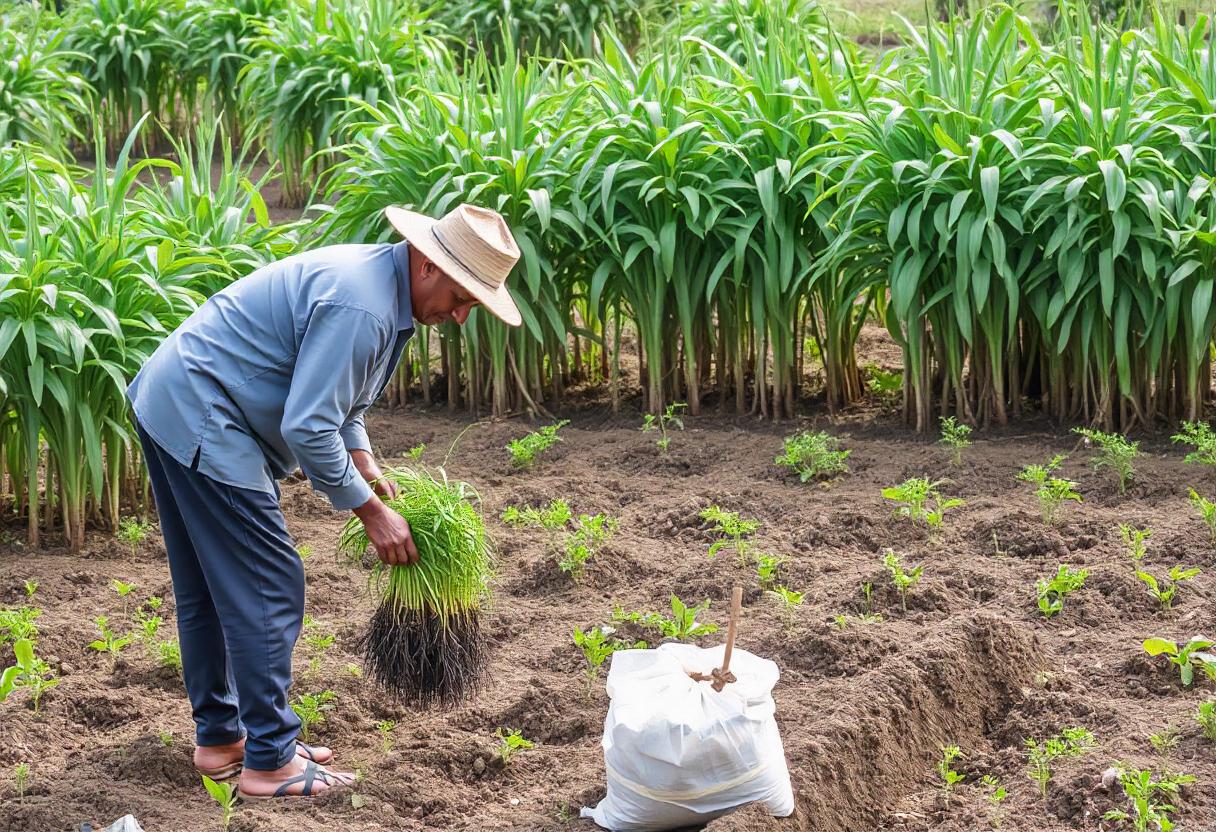
Agriculture has been the foundation of human civilization since ancient times. It plays a crucial role in providing food, raw materials for industries, and employment opportunities, especially in rural areas. Let’s explore the different aspects of agriculture work and its significance.
Crop Cultivation
Crop cultivation is the most basic and widespread form of agriculture work. It involves the growing of various crops such as cereals, fruits, vegetables, and oilseeds. Farmers must manage soil fertility, water supply, and pest control to ensure high yields. The use of modern techniques like crop rotation, irrigation systems, and chemical fertilizers has improved productivity significantly.
Livestock Farming
Livestock farming is an essential part of agriculture. It involves raising animals such as cattle, sheep, goats, pigs, and poultry for meat, dairy products, and other animal by-products. Livestock farming provides a steady income to farmers, and animals can be used for labor, manure, and even as a source of energy in some regions.
Horticulture
Horticulture focuses on the cultivation of fruits, vegetables, flowers, and ornamental plants. This form of agriculture requires more intensive care than traditional farming, as the crops are more perishable and often require specific growing conditions. Horticulture is becoming increasingly popular due to the high demand for fresh produce in local and global markets.
Aquaculture
Aquaculture, or fish farming, is an agricultural practice where aquatic organisms like fish, shellfish, and seaweed are bred and harvested. With the increasing demand for seafood and the depletion of wild fish stocks, aquaculture has emerged as an important sector. Fish farming not only contributes to food security but also provides employment opportunities in coastal regions.
Agroforestry
Agroforestry is the integration of trees and shrubs into agricultural lands. This practice improves biodiversity, enhances soil quality, and prevents soil erosion. In addition, trees provide fruits, timber, and other products that can be sold for profit. Agroforestry is a sustainable approach to farming that helps in climate adaptation and mitigation.
Organic Farming
Organic farming has gained popularity as consumers become more health-conscious. This method avoids the use of synthetic fertilizers, pesticides, and genetically modified organisms (GMOs). Instead, organic farmers rely on natural processes, such as composting, crop rotation, and biological pest control, to grow crops. Organic farming is seen as an eco-friendly approach that promotes sustainability and reduces environmental impact.
Agricultural Machinery
Agriculture work has been transformed by the use of machinery. Tractors, harvesters, plows, and irrigation systems have replaced manual labor in many agricultural tasks. These machines save time, increase efficiency, and allow farmers to cultivate larger areas. Advances in agricultural technology, such as precision farming and drone usage, are further optimizing crop management and resource utilization.
Agricultural Labor
While machinery has reduced the demand for manual labor, human involvement is still critical in agriculture. Tasks such as planting, weeding, and harvesting often require a skilled labor force. In many developing countries, agricultural labor remains a primary source of employment, contributing significantly to the livelihoods of rural communities.
Irrigation Management
Water is a critical resource for agriculture. Irrigation management ensures that crops receive adequate water to grow, especially in regions with irregular rainfall. Traditional methods like canals and wells are still used in some areas, while modern systems like drip irrigation and sprinkler systems help conserve water and improve efficiency.
Post-Harvest Management
After crops are harvested, post-harvest management becomes essential to ensure that the produce remains fresh and marketable. Activities such as cleaning, sorting, packaging, and storage are vital in maintaining the quality of agricultural products. Proper post-harvest management reduces wastage, increases profitability, and ensures food safety.
Agricultural Marketing
Farmers not only produce crops but also need to sell them. Agricultural marketing involves the transportation, distribution, and sale of farm products. It includes the activities necessary to move agricultural goods from farms to markets. Marketing strategies, access to fair prices, and understanding consumer demand are key to the economic success of agricultural work.